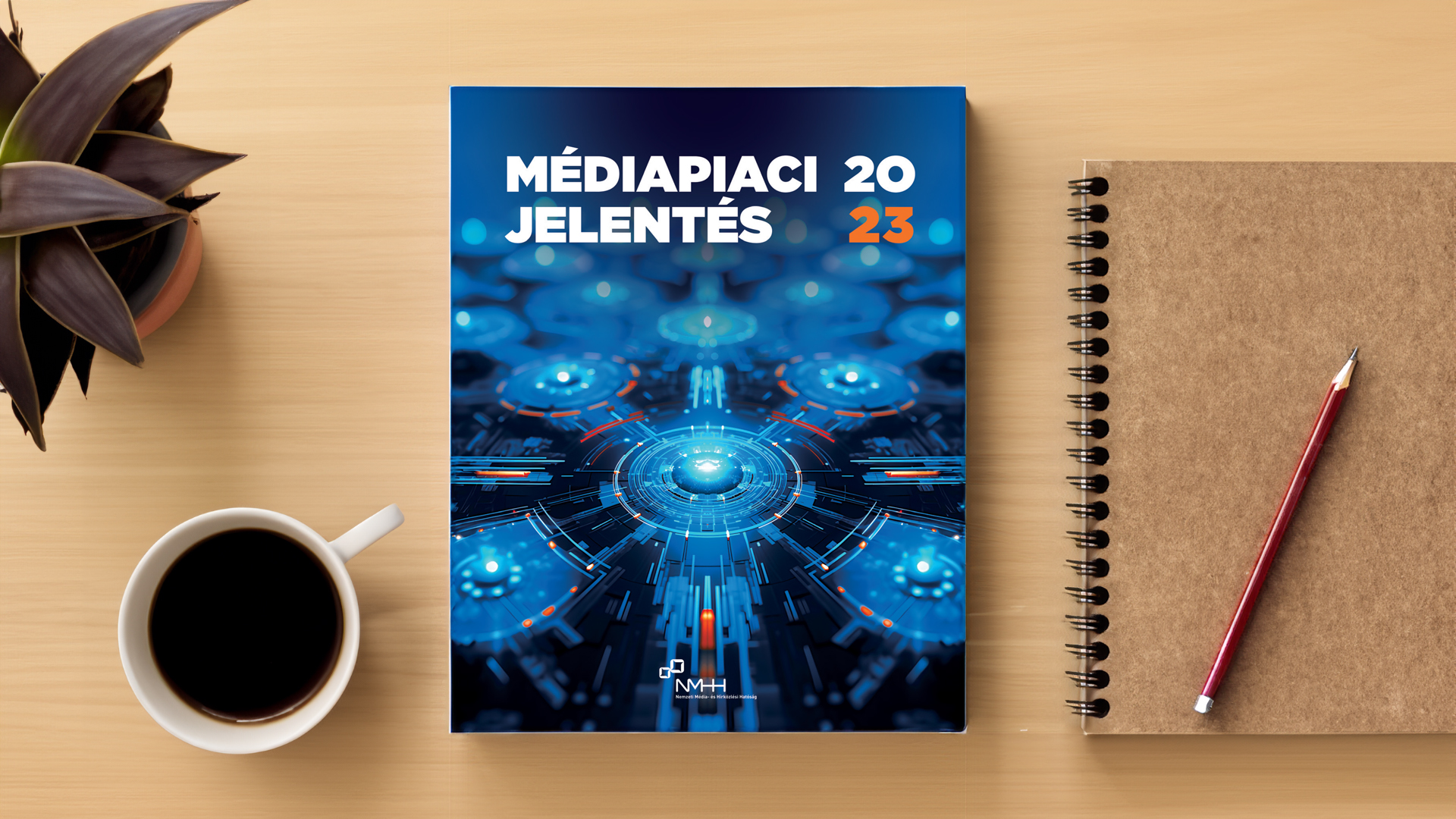The NMHH issues this year’s Media Market Report
Media consumption habits of young generations are markedly different from the average
Continuous adaptation is essential for all operators in today's media economy, made necessary by the rise of diverse online business models, the growing influence of global platforms, and changing consumption patterns, in particular the changing media consumption of younger generations.
“As a modern public authority, the most efficient way we can prepare for and respond to these challenges through evidence-based assessments based on transparent public authority operations, market and societal relationships, and consumer information,” emphasised Dr. András Koltay, President of NMHH (National Media and Infocommunications Authority), in connection with the report.
The Media Market Report 2023 of the NMHH not only comprehensively examines trends in radio, television, print and online media, new media platforms or news consumption and advertising markets, but also includes a number of new developments. It provides an analysis of the cinema and film market and developments in the public space advertising market, devoting a separate chapter to the media consumption habits of young people. Furthermore, it also includes short writings on the themes of the main chapters, presenting an interesting phenomenon, recent trend or unique research. (For example: What is the proportion of culture on the TV screen? Young people's radio listening habits; Comparing Spotify, YouTube and Hungarian radio stations' music offerings; BeReal: the only honest social media platform; Hungarians have a great deal of faith in social media; Trust in news sources and perceptions of fake news; App usage among 8–15 year olds).

“The unanimous positive reception of last year’s Media Market Report has confirmed my belief that an objective and structured professional approach can generate meaningful, forward-thinking discourse in highly sensitive subjects and often ideologically or emotionally charged areas such as the diversity of media consumption, the role of press freedom in the digital age, or the market-distorting impact of global platforms in the online media and advertising markets,” emphasised the President of the NMHH.
Current analyses show that the consumption patterns of younger generations are evolving at a faster pace compared to the overall trends. For example, 13–17 and 18–29 year olds spend on average only 133 or 144 minutes a day watching TV, compared to the national average of 289 minutes. The data also indicates that the decline in television viewing among young people becomes noticeable around the age of 13, when children’s channels are replaced by online content consumption.
Similar trends can be observed in radio listening: 15–19 year olds spent on average 64% less time listening to the radio in 2022 than four years earlier, and 20–29 year olds do the same a third less, compared to 2019. Circulation figures for printed newspapers, journals and magazines have been falling for years. Today, only 44.2% of Hungarian citizens aged 15 or more regularly read a printed newspaper and this rate is even lower among younger age groups.
Younger generations also play a key role in the rise of online media consumption: with a slight exaggeration, anything that is not available by smartphone simply does not exist for them. Children aged 8–15 spent an average of 234 minutes a day, or almost 4 hours a day, in front of a smartphone screen in 2022. The Report also shows that the average time spent on devices increased with age in direct proportion. Young people tend to simultaneously use multiple platforms, formats and content on their phones, the use of which is increasingly integrated into their daily routine. These changing media consumption habits play a significant role in the continued increase in the time spent online for the total population: in 2022, 58% of all internet users in Hungary spent more than 3 hours online per day on average.
Streaming services and video-sharing platforms such as Netflix, HBO Max, YouTube and TikTok are taking television to a new dimension, competing with the traditional linear television market. A similar transformation is taking place in radio, with online radio, music streaming services (e.g. Spotify, YouTube Music) and podcasts growing in popularity. In this changing media environment, the print press also faces challenges due to the growing proliferation of social media platforms and online content services.
According to the Report, the growth in advertising revenues has halted in 2022 and in fact, nominal increase represents a significant decrease in real terms. Global digital platforms played a key role in the growth of online advertising revenues: the dominance of the Facebook Group (Meta) and the Google Group (Alphabet) in the internet advertising market is unquestionable, with almost two thirds of the total revenues of the Hungarian online advertising market, estimated at around HUF 163 billion, going to these two groups in 2022.
There are interesting trends in the news consumption and information acquisition: barely 4% of the 15–75 age group use all four different media types, 24% choose three, and 44% choose two, while 23% get their information from a single source. However, 3% of respondents use no forms of media as a source of information on world events. The Internet plays an increasingly decisive role and the popularity of digital forms of information continues to grow. At the same time, however, the ever-expanding media supply also carries risks. 74% of internet users aged 16 and over who use social networking sites have encountered harmful content, mostly fake news (54%) and scam advertising (46%). That is why the NMHH considers it of paramount importance to use the statutory instruments at its disposal to promote the improvement of media awareness and the development of media culture in Hungary.